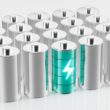Ninety-three percent of industrial companies reported on the EU Taxonomy, with the majority (76 percent) including this in their annual reports as required by the Corporate Sustainability Reporting Directive (CSRD), effective from 2025.
Nearly 87 percent of companies used the mandatory EU templates, an increase from the previous year. About 40 percent of non-financial companies reported on the newly introduced Technical Screening Criteria (TSC) for environmental objectives 3 to 6. This was shown in the ‘EU Taxonomy Reporting 2024’ published by PwC.
The EU Taxonomy classification system mandates that companies in the EU report on how sustainably they operate and invest. Since January 2022, it has applied to industrial and financial companies, with 2024 marking the third year for reporting on eligibility and alignment.
In the fiscal year 2023, financial institutions were required for the first time to report on Taxonomy-alignment for two environmental objectives: Climate change mitigation (Objective 1) and Climate change adaptation (Objective 2). This led to a more consistent range of reported taxonomy eligibility quotas, showing an improvement in data quality compared to the previous year.
The report shows that the eligibility ranges based on turnover have narrowed from 0-76% last year to between 20 and 44 percent this year. (0 to 76 percent in the previous year), and for capital expenditures (CapEx), the range is between 20 and 45 percent. This improvement is partly due to financial companies using counterparties’ data from FY2022 and the mandatory use of EU templates for a standardised reporting
For the third consecutive year, PwC analysed the status of taxonomy reporting by industrial companies, and since 2023, also included financial companies in Europe. This year’s assessment covered 12 countries, including 530 non-financial and 97 financial companies.
The report shows that the average Green Asset Ratio (GAR) based on turnover and CapEx is only two percent. This low ratio is due to ongoing challenges with data availability and uniform data collection methods. Additionally, Taxonomy eligibility criteria cover only a small portion of a bank’s financing activities so the GAR cannot yet serve as a standalone indicator of a bank’s sustainability performance. Despite improvements, there remains a significant gap between Taxonomy eligibility and alignment quotas, highlighting the long road ahead to meet ambitious alignment criteria and transition to a sustainable economy.
The differences between individual European countries are notable, with country-specific Taxonomy alignment quotas based on turnover and CapEx ranging from 0 to 23 percent. Dutch companies lead with an average alignment quota of 13 percent, possibly due to better data availability from Energy Performance Certificates (EPC).
In the European insurance sector, Taxonomy eligibility quotas range from 1 to 47 percent due to differing methodologies. In the investment business, the range is between 3 and 27 percent based on turnover and between 4 and 32 percent based on CapEx. The Taxonomy alignment quota in underwriting averages only two percent, affected by similar factors as the banking sector.
The study found that while progress has been made in implementing the EU Taxonomy Regulation, significant variability in reporting quality persists. The fiscal year 2023 saw improved uniformity in reported data across both financial and non-financial sectors. However, diverse methodologies continue to yield different results. The December 2023 Commission Notice aimed to clarify interpretative questions, but some remain unresolved. Its impact is expected to be seen only in the next reporting cycle.





















